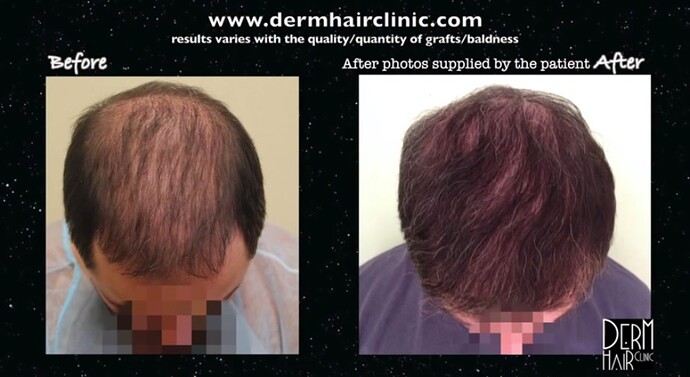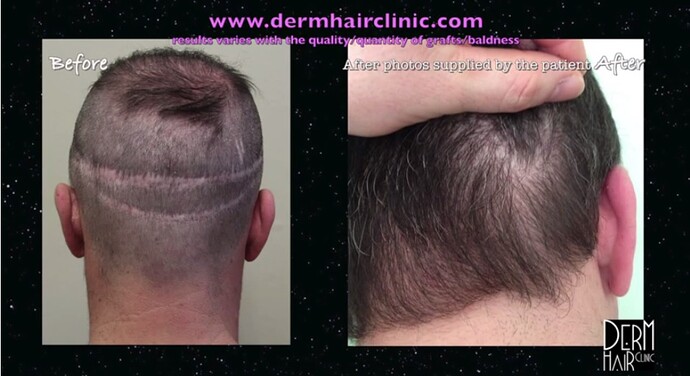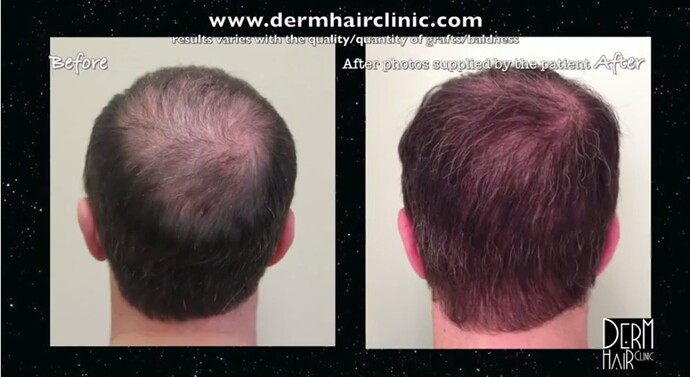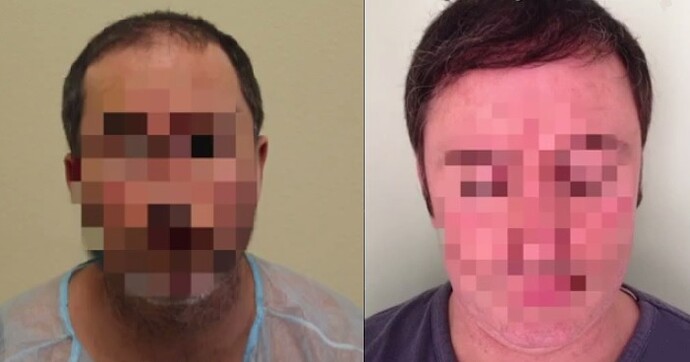Significantly improved coverage is undoubtedly one of the most coveted aspects of a hair transplant’s results. And this is, of course, contingent on being able to acquire the right number of grafts.
Desired quantities are not always attainable from the scalp alone. This is especially true after a prior hair restoration surgery has already used much of the available head donor supply. This patient case is one such example.
Challenges
The individual featured in these photos had initially chosen strip surgery. However, his outcome did not reflect improvement since most of his grafts did not grow. His hairline continued to look receded. The top part of his head was still affected by thinning. And his crown remained sparse and depleted.
Like many strip surgery patients, he felt the need to wear his hair long in order to keep his scar hidden.
BHT Surgery
Dr. Umar was able to address all these issues through a body hair transplantation surgery. He extracted 8000 grafts. Many of these came from the beard area. Thinner caliber hairs were extracted from the nape. And head hair was also used to help create a more uniform texture between the patient’s native hair and the recipient areas.
uGraft
Harvesting body hair is different from the process of extracting head hair. This is mostly due to the sharp growth angles of the hair follicles on the body. The use of regular FUE punches can be detrimental for these hair organs which are likely to be damaged by these instruments.
Dr. Umar designed his uGraft technology to reliably harvest non-head hair . This helps to ensure the safety of these follicles as they are removed from their original environment. Also uGraft’s features are also intended to produce higher wound healing standards so that any scarring that occurs is usually cosmetically insignificant.
The patient’s video can be accessed here if the player does not appear in this post.




